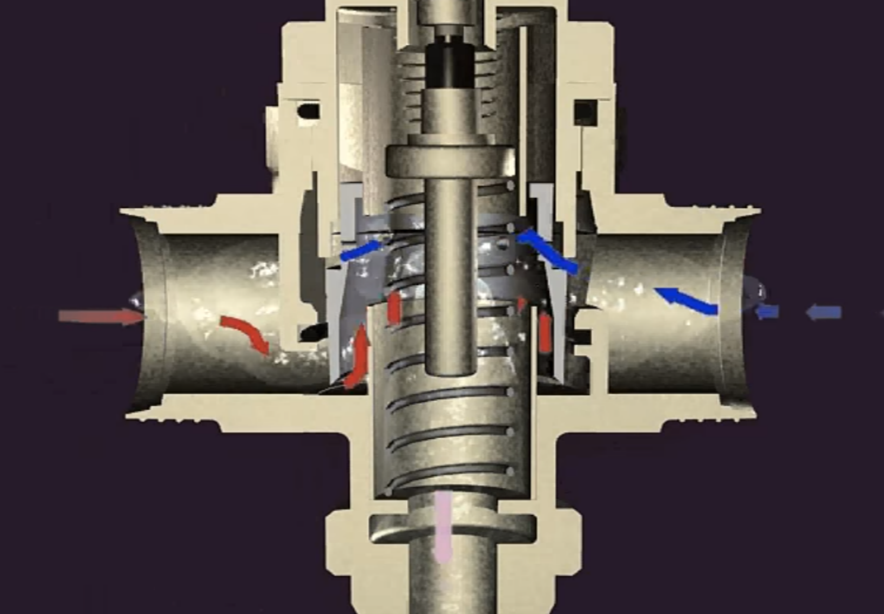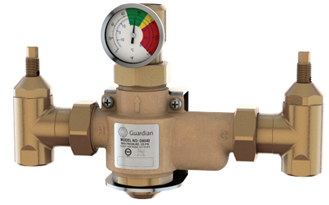
Every year in Quebec, on average three people have a fatal accident caused by the hot water in their bath or shower, and 33 others are hospitalized (6). One of the possible solutions to avoid this tragedy would be the installation of a mixing valve. This article deals with what a mixing valve is, the different types as well as their use, their risks and their maintenance.
The function of mixing valves is to adjust and to maintain the water at a predetermined and constant temperature and flow. The mixing valve mixes hot and cold water according to the preselected temperature.
Mixing valves offer several advantages such as:
The two most popular types of mixing valves on the market are the thermostatic and the pressure-balanced mixing valves. Both have advantages as well as disadvantages.
To meet the requirements of health and safety standards, emergency showers are equipped with a thermostatic mixing valve with certain features such as maintaining the temperature in the required interval and have anti-scalding protection. The thermostatic mixing valve is also used in the Long-Term Care Hospital Centers (CHSLD). However, specialized thermostatic mixing valves are mainly used for emergency showers (5). They adjust the flow rate and temperature immediately and keep them stable for the desired duration.
Pressure-balanced mixing valves are used less since they adjust more slowly to the desired temperature (2), however, they are less expensive. One of the disadvantages is that they are sensitive to pressure variations.
In CHSLDs, it is possible to install a pressure-balanced and thermostatic combined mixing valve to meet the requirements of the Safety Code of the Régie du Bâtiment du Québec (section 7.3).
Several dangers can occur with poor selection or the absence of mixing valve:

In conclusion, in order to improve the well-being, health and safety of users, companies will always consider the use of a thermostatic mixing valve since they offer more safety. When the thermostatic mixing valve is used for an emergency shower, it must be selected for that specific use in order to meet health and safety requirements.
References:
(2) Qu'est-ce qu'un mitigeur thermostatique - Tendances & Design - Salle de bains | GROHE
(3) Le mitigeur de douche : les différents types, entretien, achat, choix (m-habitat.fr)
(4) Thermostatic Mixing Valves
We use cookies to understand how you use our site and to improve your experience. This includes personalizing content and advertising. By continuing to use our site, you accept our use of cookies, terms and conditions, privacy policy. Confused? Send us an e-mail.
I acceptWe use cookies
Respecting your privacy matters to us. We use cookies to personalize our content and facilitate your digital experience. Some cookies may be collected with your consent.
Essential
Essential cookies help make a website usable by enabling basic functions such as page navigation and access to secure areas of the website. The website cannot function properly without these cookies.
Performance
These cookies enable us to analyze navigation on our sites and improve their operation.
Customization
Preference cookies enable a website to remember information that modifies the behavior or appearance of the site, such as your preferred language or the region you are in.
Targeted advertising
These cookies help us limit the number of times you see an advertisement, personalize our offers and services according to your centers of interest, measure the effectiveness of an advertising campaign, and so on. They may be shared with our partners.
We use cookies
Respecting your privacy matters to us. We use cookies to personalize our content and facilitate your digital experience. Some cookies may be collected with your consent.